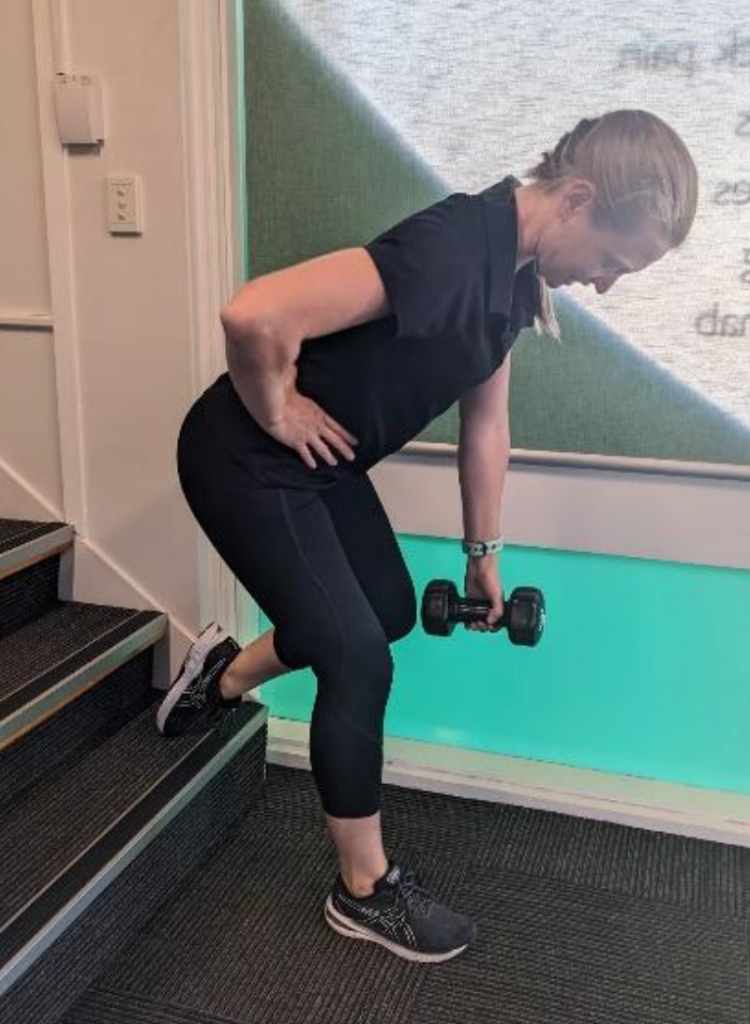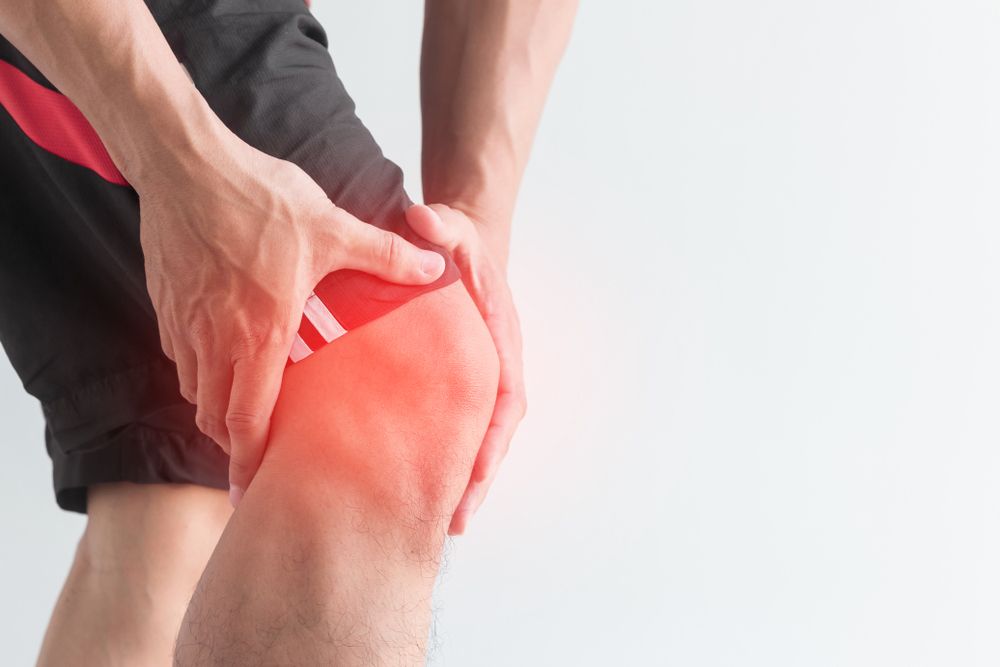[vc_row][vc_column][vc_column_text]My bike accident in October last year has definitely taught me a few things about acute, traumatic pain. The amount of pain I experienced at that time, was worse than I could ever imagine. From the moment of impacting the ground, through my whole rehab and walking away from it now (literally), I can say that I have been fortunate enough to experience how the pain mechanisms, that we physios learn about, actually happen in real-time. And I am going to try explain this to you here.
The story (in a nutshell)…

I was riding at speed along the Esplanade in Mt Pleasant when a car pulled out on our group and I clipped the wheel in front of me, at about 34 km/h. I landed almost directly on my right hip in the middle of the road, my elbow quickly becoming a braking pad to stop me sliding on the bitumen.
Pain by definition…
Pain is an unpleasant experience by which the brain makes sense of neural signals coming from various receptors in your body. This means that pain is different for each person, as your past experiences, your current level of systemic sensitivity and many other factors will impact how the brain interprets these signals. The pain experience is meant as a warning sign, aimed at protecting, preventing or minimising tissue damage.
A simple example is if you touch a hot surface, thermal receptors in the skin send lots of neural signals to the brain which then makes you aware “that is hot, that burns, touching this will do harm”. In the meantime, your nervous system can rapidly realise how many signals are being sent from your hand and fires up a wicked reflex that will move your hand away before your brain has even processed the pain experience of burning your fingers.

Pain in my context…
After I hit the ground and came to a stop it felt like my entire body was screaming at me. All the receptors from all over my body were fired up, and sending a barrage of signals to my brain. I couldn’t move. What feels like pain stopping me, is actually my brain saying “don’t move, all the alarms are going off, moving now will cause more damage”.
The signals eventually wound down and I could start to feel what was actually injured. My elbow, my fingertips, my thumb. My right hip. I couldn’t take a step with my right leg. It would just give way, not due to the pain itself, but due to the reflex saying “no, this leg must not take weight”. I was helped onto the verge but at this point, it seemed pretty understandable that I couldn’t stand on that leg after the impact it just had.
It wasn’t until I went into ED and transferred to the hospital bed, the second excruciating pain experience, that I felt like something was actually broken. The x-ray imaging was unremarkable, so they were keen to get me up and walking (with crutches) to the bathroom. A 20-metre round trip took me 5 minutes. I thought I was going to faint. I was seeing double. I was sweating. I was breathing rapidly. My heart was racing. And yes, it was painful. All these things that I was experiencing, was my brain still telling me to stop moving because the “alarms” were still going off.
I was discharged home half an hour later (because I wanted to be home) with crutches and Tapentadol. Over the coming days (and many thanks to the pain killers), these body responses started to decrease. However, due to ongoing pain and still not fully weight bearing four days later, I went for MR imaging which showed a stable fracture of the acetabulum (hip socket).
What I have learned from this experience is that in the presence of tissue damage, our brain is capable of doing anything to stop us damaging the tissue further. Yes there is pain, but the signals coming from the receptors of injured tissue are what drove the entire acute pain experience. My tissues are all healed now (as you would expect six months on) and I am fortunate enough not to have persistent pain following this injury. My “alarms” have stopped going off and my brain has returned to a “pain-free” state.
Ride safe everyone!
 [/vc_column_text][ultimate_spacer height=”50″ height_on_mob=”50″][/vc_column][/vc_row][vc_row full_width=”stretch_row” wrap_container=”yes” el_id=”our-team” el_class=”colored animate”][vc_column width=”1/3″][vc_single_image image=”4583″ img_size=”full” alignment=”center” el_class=”m-b-none” label=””][ultimate_spacer height=”40″ height_on_tabs=”30″ height_on_tabs_portrait=”20″ height_on_mob_landscape=”20″ height_on_mob=”20″][porto_buttons btn_title=”BOOK ONLINE NOW” btn_link=”url:https%3A%2F%2Fhealthengine.com.au%2Fphysiotherapist%2Fwa%2Fmundaring%2Fmundaring-and-hills-physiotherapy%2Fs62196||target:%20_blank|” btn_align=”porto-btn-center” btn_title_color=”#ffffff” btn_bg_color=”#77d1b9″ btn_hover=”porto-btn-fade-bg” el_class=”m-b-none”][/vc_column][vc_column width=”2/3″][ultimate_spacer height=”0″ height_on_mob_landscape=”15″ height_on_mob=”15″][porto_ultimate_heading main_heading=”AMY ZAPPAVIGNA” alignment=”left”]
[/vc_column_text][ultimate_spacer height=”50″ height_on_mob=”50″][/vc_column][/vc_row][vc_row full_width=”stretch_row” wrap_container=”yes” el_id=”our-team” el_class=”colored animate”][vc_column width=”1/3″][vc_single_image image=”4583″ img_size=”full” alignment=”center” el_class=”m-b-none” label=””][ultimate_spacer height=”40″ height_on_tabs=”30″ height_on_tabs_portrait=”20″ height_on_mob_landscape=”20″ height_on_mob=”20″][porto_buttons btn_title=”BOOK ONLINE NOW” btn_link=”url:https%3A%2F%2Fhealthengine.com.au%2Fphysiotherapist%2Fwa%2Fmundaring%2Fmundaring-and-hills-physiotherapy%2Fs62196||target:%20_blank|” btn_align=”porto-btn-center” btn_title_color=”#ffffff” btn_bg_color=”#77d1b9″ btn_hover=”porto-btn-fade-bg” el_class=”m-b-none”][/vc_column][vc_column width=”2/3″][ultimate_spacer height=”0″ height_on_mob_landscape=”15″ height_on_mob=”15″][porto_ultimate_heading main_heading=”AMY ZAPPAVIGNA” alignment=”left”]
Senior Physiotherapist & Pilates Instructor
[/porto_ultimate_heading][vc_column_text]
Amy integrates her clinical skills, understanding of body functions and Pilates knowledge to treat and manage her clients in a holistic way.
Amy can assist you in developing a plan or management strategy to overcome your injury or achieve your next fitness goal.
In her spare time, Amy is training for her next triathlon or lounging with her greyhound, Lewis.
SPECIAL INTERESTS:
- Assessment and management of running injuries
- Rehabilitation of spinal pain
[/vc_column_text][/vc_column][/vc_row]

